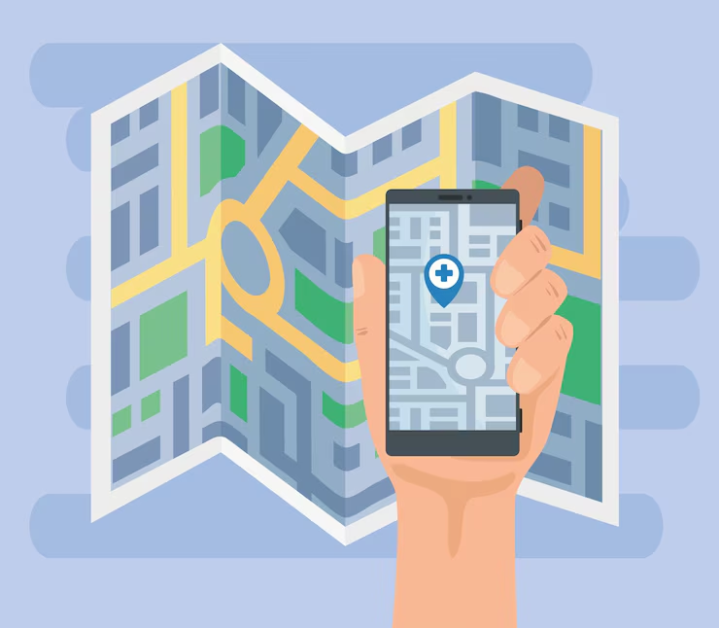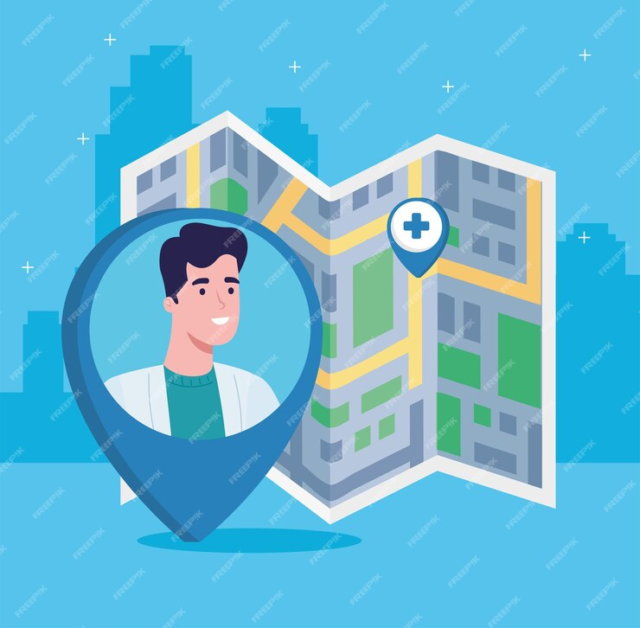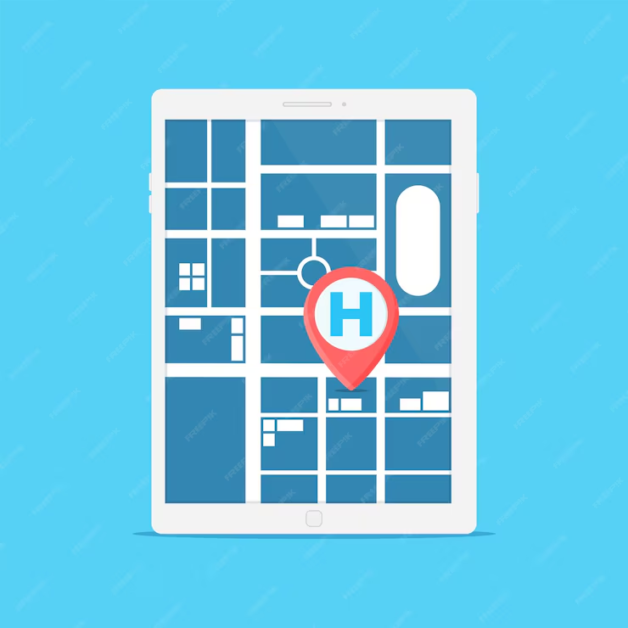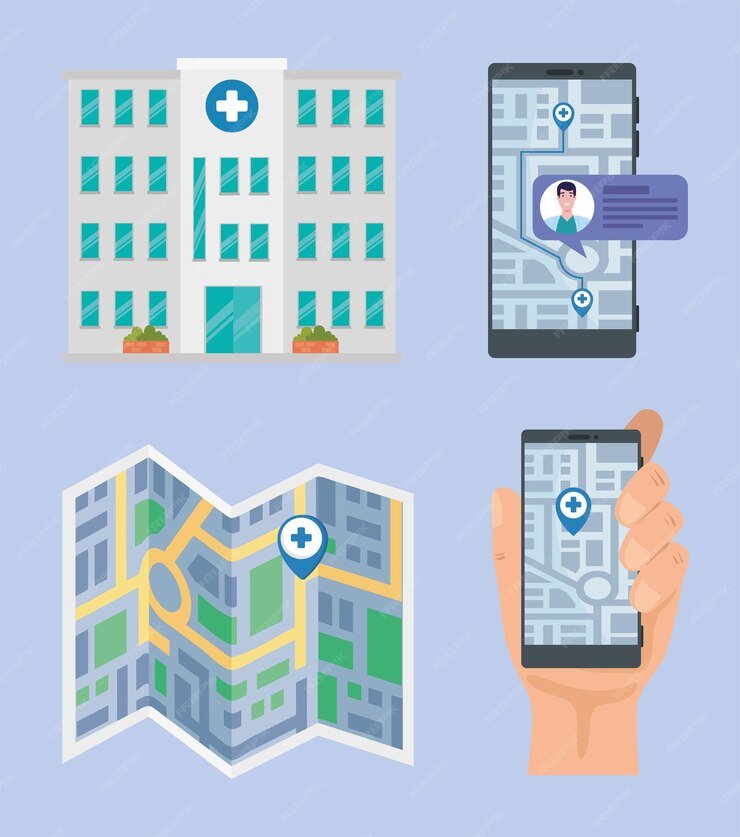In the complex environment of hospitals, navigating through diverse departments, floors, and wings can be a daunting challenge for sufferers, site visitors, or even team of workers. This is where Wayfinding Solutions for Hospitals become essential, assisting to create a continuing and pressure-unfastened experience. With advancements in era, answers like “MyChart Wayfinding” have emerged, providing digital help that complements conventional wayfinding techniques. This guest post will discover the importance of wayfinding in hospitals, key additives of an powerful system, and the role of digital tools like MyChart Wayfinding.
Importance of Wayfinding Solutions for Hospitals
1. Enhancing Patient and Visitor Experience
Navigating a clinic may be overwhelming, in particular for those surprising with the facility. Effective wayfinding answers assist alleviate strain by means of supplying clean, available guidelines. This guarantees that sufferers and site visitors can reach their locations with out confusion, lowering anxiety and improving common pride.
2. Improving Operational Efficiency
Hospitals are often massive, sprawling complexes with a couple of departments, clinics, and workplaces. An powerful wayfinding system streamlines the motion of humans, minimizing delays and making sure that appointments and schedules are maintained. This contributes to better useful resource utilization and a smoother workflow in the facility.
3. Reducing Staff Interruptions
When traffic or sufferers are lost, they often flip to sanatorium personnel for directions, that may interrupt their paintings. By implementing a comprehensive wayfinding machine, hospitals can lessen these interruptions, allowing workforce to focus on their number one responsibilities, consequently enhancing productivity.
4. Enhancing Accessibility
Wayfinding answers aren’t just about presenting guidelines; additionally they make sure that centers are available to everyone, which include people with disabilities. By incorporating features like braille signage, audio guidelines, and clear visible cues, hospitals can create an inclusive environment that caters to the wishes of all traffic.

Key Components of Effective Wayfinding Solutions for Hospitals
1. Signage
Clear, regular, and strategically placed signage is the spine of any wayfinding gadget. In hospitals, signage need to be easy to understand, with commonplace symbols and language that can be comprehended through humans from numerous backgrounds. Signage should be positioned at key selection factors, consisting of entrances, intersections, and elevators, to manual site visitors appropriately.
2. Maps and Directories
Interactive maps and directories positioned at strategic places within the health facility assist traffic orient themselves and find their way. These can be bodily maps positioned on walls or virtual kiosks that allow customers to search for unique departments, clinics, or rooms. Mobile-friendly virtual maps handy thru smartphones also are becoming more and more popular.
3. Digital Wayfinding Tools
In the virtual age, solutions like “MyChart Wayfinding” have revolutionized medical institution navigation. These tools provide actual-time, step-via-step guidelines through smartphones or other digital gadgets, guiding customers from their contemporary vicinity to their preferred vacation spot inside the health center. These virtual equipment can also combine with appointment scheduling systems, sending reminders and instructions to patients earlier than their go to.
4. Color-Coding and Zone Marking
Color-coding distinct regions or zones within the medical institution is an powerful way to simplify navigation. By assigning particular shades to specific departments or flooring, hospitals can create an intuitive device that allows site visitors effortlessly pick out and observe an appropriate course. Zone marking, coupled with clean signage, similarly enhances the ease of navigation.
5. Staff Training and Assistance
While digital and bodily wayfinding equipment are critical, skilled team of workers who can assist patients and site visitors is likewise vital. Hospitals have to ensure that each one personnel, from receptionists to volunteers, are familiar with the wayfinding device and might offer accurate instructions whilst wished.
The Role of Technology in Wayfinding Solutions for Hospitals
1. Mobile Wayfinding Apps
Mobile apps designed mainly for sanatorium navigation are getting more and more commonplace. These apps provide personalised instructions, often integrating with hospital databases to offer real-time updates on branch locations, appointment schedules, and even parking availability. Apps like “MyChart Wayfinding” are at the forefront of this innovation, supplying a user-pleasant interface that simplifies the hospital experience.
2. Indoor Positioning Systems (IPS)
Indoor Positioning Systems (IPS) use technology like Bluetooth beacons, Wi-Fi, and GPS to offer specific vicinity data within indoor environments. In hospitals, IPS can guide sufferers and visitors via complex layouts, presenting turn-with the aid of-flip guidelines just like what is located in out of doors navigation apps. This era can also be included with existing health facility systems to beautify the overall wayfinding experience.
3. QR Codes and NFC Tags
Quick Response (QR) codes and Near Field Communication (NFC) tags are modern tools that can be located at strategic points inside the clinic. Visitors can scan a QR code or faucet an NFC tag with their telephone to get entry to maps, instructions, or extra statistics approximately the clinic. This era gives a contactless wayfinding solution this is each efficient and easy to use.
4. Augmented Reality (AR)
Augmented Reality (AR) is an emerging generation that overlays virtual records onto the bodily world through a cellphone or tablet. In hospitals, AR may be used to guide visitors thru the ability, highlighting pathways, and imparting interactive guidelines. While nonetheless in its early ranges, AR has the ability to convert wayfinding by using making navigation more enticing and intuitive.

Implementing Wayfinding Solutions: Best Practices
1. Conducting a Needs Assessment
Before enforcing any wayfinding solution, hospitals need to conduct a radical desires evaluation. This entails studying the power’s layout, figuring out commonplace ache factors for navigation, and expertise the wishes of sufferers and site visitors. Engaging with stakeholders, inclusive of body of workers and patients, can offer treasured insights into the best wayfinding strategies.
2. Ensuring Accessibility and Inclusivity
Wayfinding answers need to cater to all visitors, which include those with disabilities. This manner incorporating capabilities like braille signage, auditory commands, and visible cues which can be effortlessly identifiable. Digital equipment have to additionally be designed with accessibility in mind, supplying options like text-to-speech and adjustable font sizes.
3. Integrating with Existing Systems
To maximize the effectiveness of wayfinding solutions, they have to be incorporated with present health facility structures. This consists of linking wayfinding apps with appointment scheduling, electronic health data, and affected person management structures. Such integration guarantees a unbroken revel in for patients, from booking an appointment to arriving at the proper region.
4. Regular Maintenance and Updates
Wayfinding systems, both bodily and digital, require ordinary preservation and updates to remain powerful. Signage ought to be inspected periodically to make sure it’s miles clear and seen, whilst virtual equipment want to be updated to mirror any modifications inside the clinic’s layout. Regular remarks from customers can assist discover regions for development and ensure that the machine keeps to fulfill the needs of patients and traffic.
Future Trends in Wayfinding Solutions for Hospitals
1. Artificial Intelligence (AI) Integration
The integration of Artificial Intelligence (AI) in wayfinding answers is a trend this is likely to grow. AI can examine user conduct, expect styles, and offer customized navigation assistance. For example, AI could study the choices of a patient who often visits the hospital and provide tailored guidelines that in shape their particular desires.
2. Voice-Activated Navigation
Voice-activated navigation structures are becoming extra common in public areas, and hospitals aren’t any exception. This technology permits customers to invite for directions and acquire spoken commands, which may be particularly beneficial for individuals with visual impairments or folks that prefer palms-unfastened navigation.
3. Integration with Telemedicine Platforms
As telemedicine keeps to extend, there is potential for integrating wayfinding solutions with telemedicine systems. For example, a patient should get hold of directions to a specific department after a virtual session, or a telemedicine app should manual them to the appropriate facility for in-character observe-up care. This integration creates a extra cohesive healthcare enjoy, bridging the gap among digital and bodily visits.
4. Personalized Navigation for Specific Needs
Future wayfinding solutions may also offer greater customized navigation options based at the precise needs of different person agencies. For example, pediatric sufferers and their households would possibly get hold of guidelines that keep away from certain regions or take them thru toddler-pleasant zones. Similarly, patients with mobility troubles will be guided along the maximum on hand routes, warding off stairs or lengthy distances.

Conclusion
In these days’s speedy-paced healthcare environment, Wayfinding Solutions for Hospitals are vital for reinforcing the affected person enjoy, improving operational performance, and lowering the burden on team of workers. By combining conventional methods with virtual gear like “MyChart Wayfinding,” hospitals can create a comprehensive and available wayfinding system that meets the desires of all visitors. As generation continues to adapt, we will assume wayfinding answers to turn out to be even extra sophisticated, imparting personalized, AI-driven steerage that transforms the manner people navigate healthcare centers. Implementing these solutions efficaciously calls for cautious making plans, ordinary updates, and a dedication to accessibility and inclusivity, making sure that each traveler to the hospital has a effective and pressure-free experience.



More Stories
Tax Benefits of Using Virtual Offices
What Are Industrial Cable Glands and How Do They Work?
Benefits of Reviewing PTE Mock Test Results